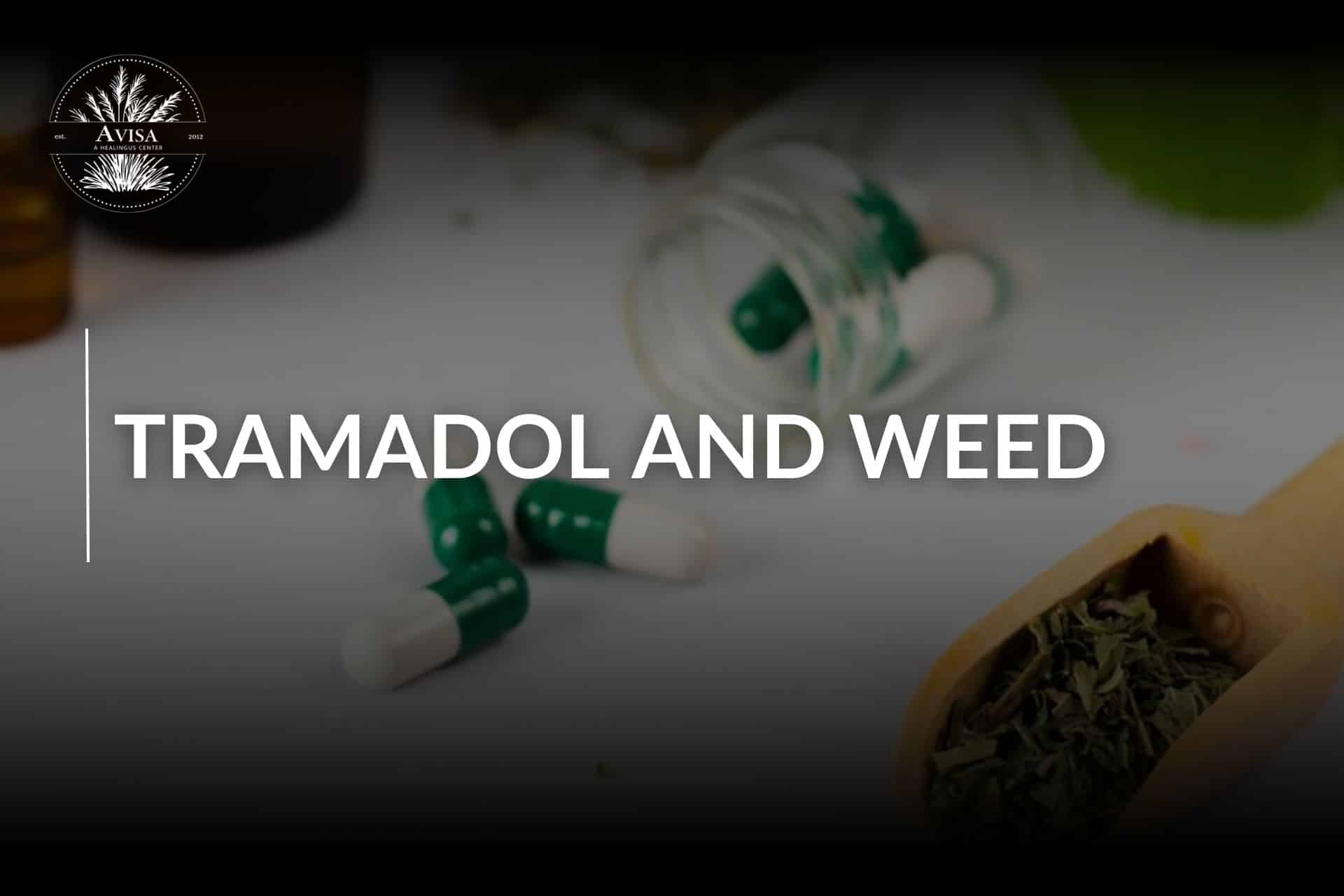Tramadol and weed (cannabis) are both commonly used to manage pain. When people consider dangerous drug interactions, marijuana often isn’t top of mind. Unfortunately, this oversight makes marijuana combinations particularly risky. Combining marijuana with narcotic pain relievers, such as tramadol, involves a wide range of potential hazards. These risks include not only impaired decision-making but also specific and direct physical dangers.
This article aims to provide a clear picture of the potential interactions between tramadol and weed. We’ll explore the specific risks involved in mixing tramadol and weed, answer common questions you might have, and offer guidance on safe pain management strategies.
Understanding Tramadol
Before exploring the potential interaction between tramadol and weed, let’s establish a clear understanding of tramadol itself.
What is Tramadol?
Tramadol is a prescription drug that is a type of opioid pain reliever. Opioids are drugs that come from the opium poppy or are made to work like it. They mainly work on the central nervous system to lessen the feeling of pain. “Analgesic” just means pain reliever.
Uses and prescriptions
Tramadol is prescribed to manage moderate to moderately severe pain. Some common conditions for which it might be used include:
- Post-surgical pain
- Pain from injuries (sprains, fractures)
- Chronic pain conditions (arthritis, back pain)
- Nerve pain
Mechanism of Action
Tramadol works in two main ways to provide pain relief:
- Binding to opioid receptors in the brain and spinal cord: This helps to decrease pain signals sent to the brain.
- Influencing the levels of certain neurotransmitters: Tramadol may also affect the levels of serotonin and norepinephrine, further contributing to pain relief and potentially mood regulation.
Common side effects
While tramadol offers pain relief benefits, it’s crucial to be aware of its potential side effects:
These may include
- Drowsiness
- Dizziness
- Nausea
- Vomiting
- Constipation
- Headache
Risks and Warnings
It’s important to understand the potential risks associated with tramadol use.
- Serious Risks: High doses or prolonged tramadol use can cause dependence, seizures, and breathing issues.
- Interactions: Inform your doctor of all medications to avoid serious side effects.
Understanding both the benefits and potential risks of tramadol is crucial for making informed decisions about your pain management plan.
Understanding Weed
Now that we’ve explored tramadol let’s shift our focus to marijuana and its potential interaction with this medication.
What is Weed?
Weed, also known as Marijuana or cannabis, is a plant with psychoactive properties. It’s used for both medical and recreational purposes.
- Medical Uses: Weed can be prescribed to manage various conditions, including chronic pain, nausea, anxiety, and muscle spasms.
- Recreational Uses: Weed is also commonly used for relaxation and recreational purposes due to the psychoactive effects it produces.
Active Components
Marijuana contains several hundred chemical compounds, but the two primary ones responsible for its effects are:
- Tetrahydrocannabinol (THC): This is the main psychoactive component in marijuana, responsible for the “high” sensation associated with its use.
- Cannabidiol (CBD): CBD is another prominent compound in marijuana, but unlike THC, it doesn’t produce a psychoactive effect. CBD offers potential therapeutic benefits, including pain relief and reduced anxiety.
Effects on the Body and Mind
The effects of marijuana can vary depending on factors like the amount consumed, the strain of marijuana, and individual tolerance. Here’s a general overview of its impact:
- Central Nervous System: THC affects the central nervous system, leading to altered mood, perception, and coordination. This can manifest as feelings of euphoria, relaxation, drowsiness, and altered time perception.
- Body: Marijuana can cause changes in heart rate, blood pressure, and appetite.
- Cognitive Function: Thinking, memory, and problem-solving abilities can be temporarily impaired under the influence of marijuana.
Potential Side Effects
While marijuana can offer some benefits, it’s important to be aware of its potential side effects:
- Impaired Judgment and Coordination: These effects can increase the risk of accidents or injuries.
- Anxiety and Paranoia: Marijuana, especially in high doses, can trigger anxiety and paranoia in some users.
- Respiratory Problems: Smoking marijuana can irritate the lungs and exacerbate respiratory conditions like asthma.
- Cognitive Impairment: Long-term marijuana use, particularly in adolescents, may be linked to impaired memory and learning.
Understanding the effects and potential risks of both tramadol and marijuana is crucial before considering their interaction.
The Interaction Between Tramadol and Weed
Now that we understand tramadol and Weed individually, let’s get into the potential dangers of combining them.
How the drugs interact in the body
The interaction between tramadol and Weed is complex and can affect the body in several ways
- Metabolic Pathways: Tramadol is broken down by the liver through specific enzyme pathways. Certain compounds in marijuana can potentially interfere with these pathways, impacting how quickly tramadol is eliminated from the body. This can lead to higher levels of tramadol in the bloodstream for a longer duration, increasing the risk of side effects.
- Central Nervous System Impact: Both tramadol and Weed affect the central nervous system (CNS). Tramadol acts on opioid receptors, while THC in marijuana primarily targets cannabinoid receptors. However, there can be some overlap in their effects on the CNS, leading to additive effects. This means that combining them can significantly amplify the sedative and depressant effects on the brain, potentially leading to dangerous consequences.
Potential Dangers and Side Effects
Mixing tramadol and weed can lead to a range of potential dangers and side effects, some of which can be life-threatening:
- Enhanced Sedation: Both tramadol and weed have sedative properties. Combining them can lead to excessive drowsiness, dizziness, and impaired coordination, increasing the risk of accidents or injuries.
- Impaired Cognitive Function: Both medications can impair thinking, memory, and reaction time. Combining them can significantly worsen these effects, making it difficult to perform even simple tasks safely.
- Increased Risk of Overdose: Since both drugs depress the respiratory system, mixing them can heighten the risk of overdose. This can lead to slowed breathing, coma, and even death.
Case Studies and Reports
While controlled studies are limited due to ethical considerations, anecdotal reports, and case studies highlight the potential dangers of combining tramadol and weed. These reports document instances of:
- Severe respiratory depression requiring hospitalization
- Seizures
- Altered mental state and hallucinations
- Life-threatening situations requiring emergency medical intervention
It’s crucial to remember that these are just a few examples, and the severity of the interaction can vary depending on individual factors.
Safety Tips and Precautions
Understanding the potential dangers of combining tramadol and weed is crucial for making informed decisions about your health and well-being. Here are some key safety tips and precautions to follow:
Consultation with healthcare providers
- Open Communication: If you are using tramadol and weed, or vice versa, it’s essential to have an open and honest conversation with your doctor.
- Weighing Risks and Benefits: Your doctor can help you understand the potential risks and benefits of combining these substances based on your individual medical history and current medications.
- Exploring Alternatives: There might be alternative pain management strategies or medications your doctor can recommend that offer a safer and more effective approach for you.
Dosage management
- Never Exceed Prescribed Dosage: If you are taking tramadol as prescribed by your doctor, never increase the dosage or take it more frequently in an attempt to enhance pain relief, especially if considering marijuana use.
- Start Low and Go Slow: If you choose to use marijuana despite the risks, start with the lowest possible dose and wait to observe the effects before consuming more.
Recognizing warning signs of adverse reactions
- Be Alert for Symptoms: If you experience any concerning symptoms after combining tramadol and weed, such as severe drowsiness, difficulty breathing, confusion, or seizures, seek immediate medical attention. Don’t hesitate to call emergency services.
- Carry a Naloxone Kit: If you or someone you know is at risk of opioid overdose, consider carrying a Naloxone kit. This medication can temporarily reverse the effects of an opioid overdose, potentially saving a life.
Remember, your safety and well-being are paramount. By following these tips and consulting your healthcare provider, you can make informed decisions and avoid the potential dangers of combining tramadol and marijuana.
Conclusion
Awareness and open communication with healthcare providers are vital. Always tell your doctor about all the substances you are using to ensure a safe and effective pain management plan tailored to your needs.
Considering alternatives and following prescribed dosages can reduce the risks of using tramadol and weed.
For those managing pain, the combination of tramadol and weed shows the importance of cautious and informed usage. Your health and safety should be a priority, and professional medical advice is essential.
If you are using tramadol and weed, talk to your healthcare provider to discuss your options.
Never hesitate to seek professional advice for managing your health.
For more information on safe pain management strategies and the risks of drug interactions, join Avisa today.











